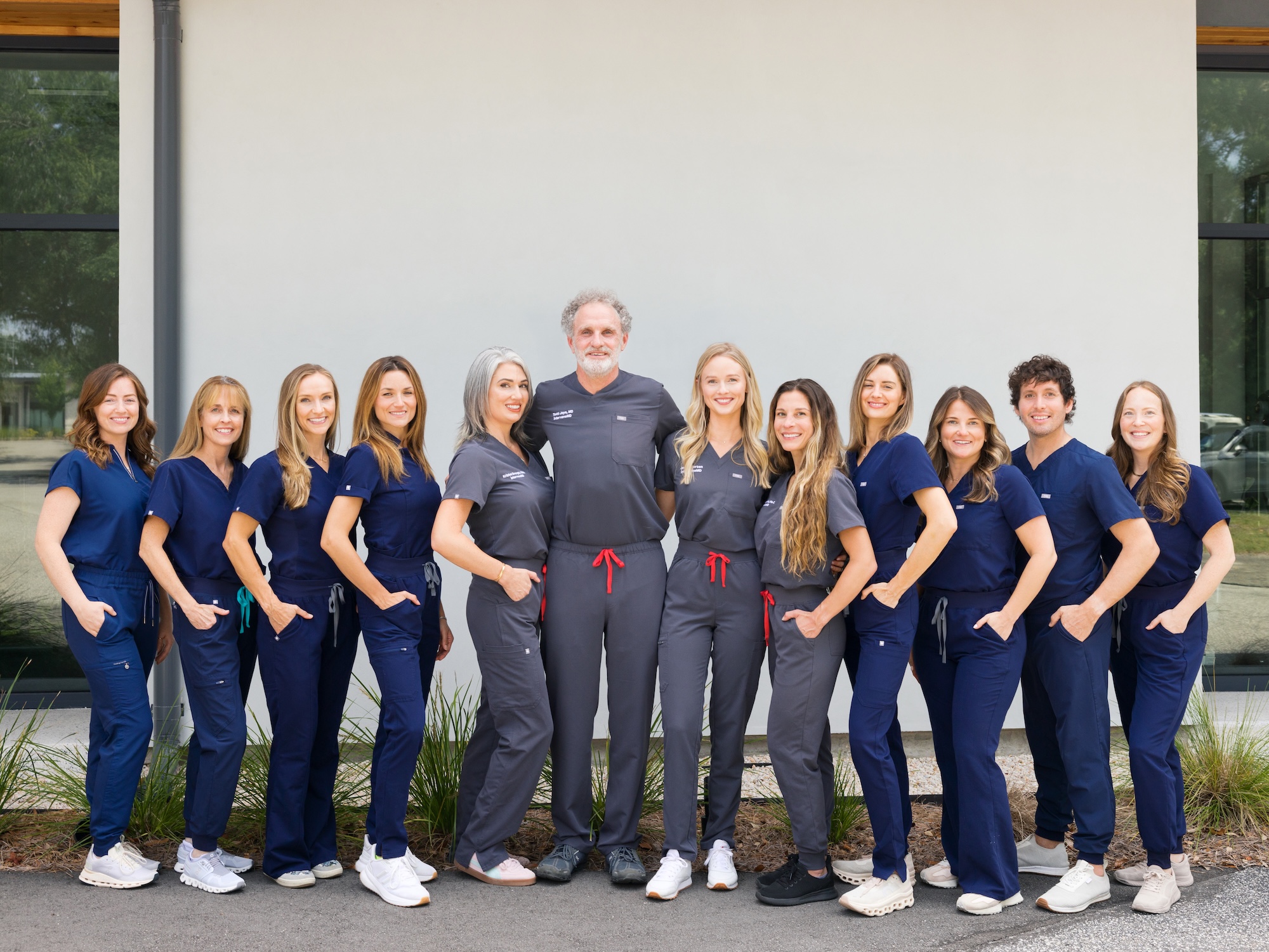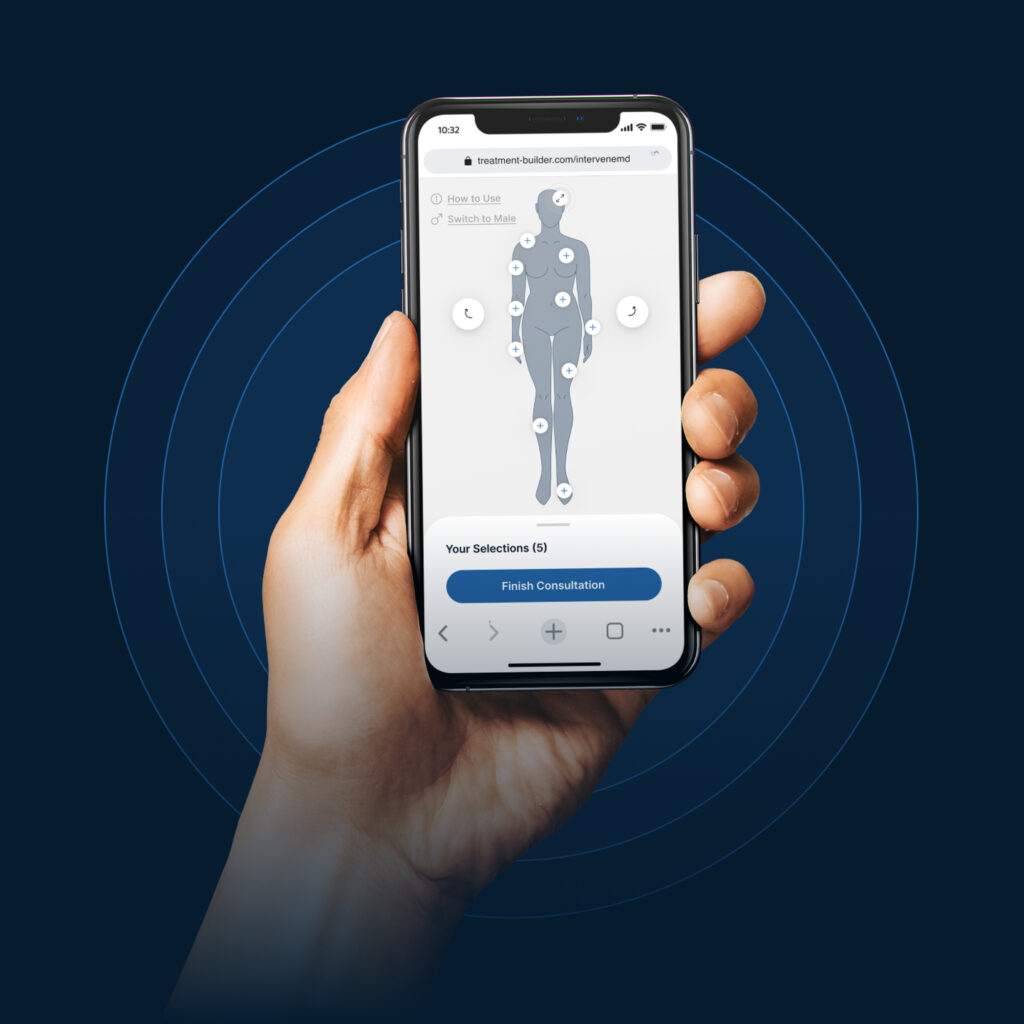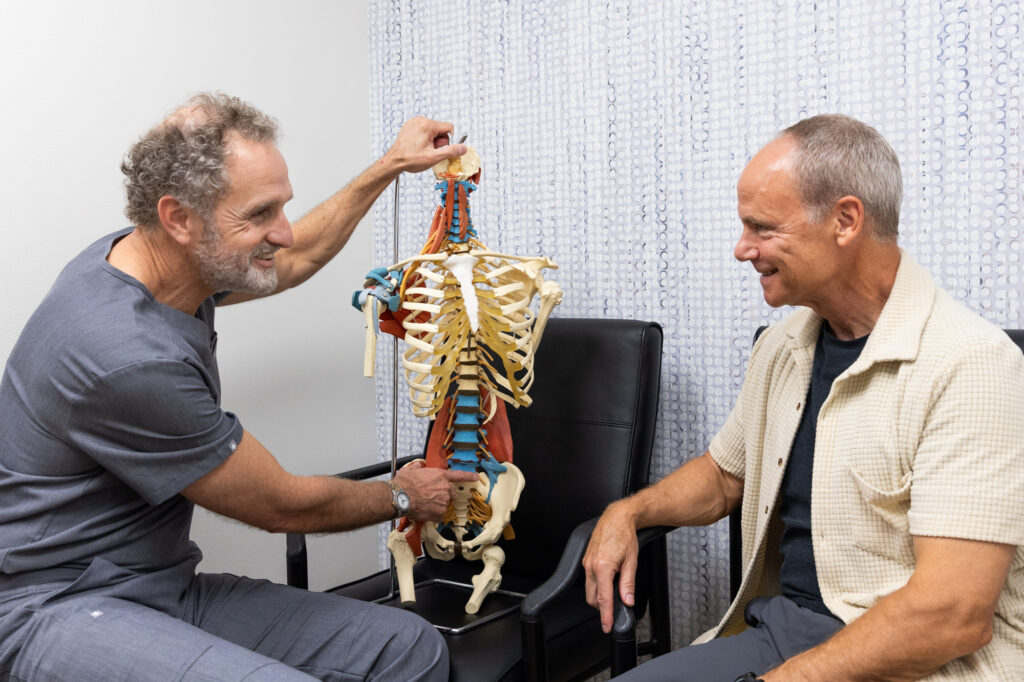
Many of our patients describe back pain as feeling like a constant battle. Whether you cope with unpredictable spasms or constant aches, you deserve solutions that will guide you back to better well-being.
At InterveneMD, our experts understand your back pain—your struggles, your experiences, and the obstacle that pain can be. While under our care, we’ll listen to your concerns, never dismissing or minimizing them. We prioritize lasting, effective solutions to help you achieve back pain relief in Mt. Pleasant, SC.
Continue reading to learn more about some of the most common types of back pain and how we identify the root cause of your concerns when creating your plan. Ready to speak with one of our pain experts? Give our team a call to schedule your consultation.
The 5 Most Common Types of Back Pain
Back pain is personal, and often complex. Maybe you never fully recovered from an old sports injury. Or maybe you’ve noticed a new aching discomfort over the past few months. Regardless of what type of back concerns you’re facing, it can feel as though no one truly understands your pain.
But at InterveneMD, our team sees your pain and wants to help. Many of our experts have dealt with back pain themselves, and they understand how overwhelming it can be to find the right solution.
Identifying the source of your pain is the first step in achieving relief. Here are some of the most common forms of back pain we treat at our practice.
Arthritis
Spinal arthritis occurs when the facet joints, or the small joints connecting each vertebra, become inflamed. This condition can cause pain and stiffness anywhere along the spine, but most frequently affects the lower back and neck.
Though the cause of spinal arthritis is unknown, some risk factors can include:
- Genetics
- Age
- Obesity
- Poor posture
- Past injuries
Osteoarthritis is the most common form of arthritis that affects the spine, which occurs as the cartilage between joints slowly breaks down. Many of our patients notice the pain associated with this condition when they twist or bend their backs.
Degenerative Disc Disease
Degenerative disc disease can cause pain as the rubbery spinal discs that cushion the vertebrae gradually wear down. Disc degeneration is a natural part of the aging process, but when left untreated, can cause the following health concerns:
- Adult scoliosis – A painful spinal curvature.
- Herniated disc – When the soft, jelly-like center of a spinal disc leaks out of its outer ring.
- Spinal stenosis – Occurs when the space around your spinal cord becomes narrower.
- Spondylolisthesis – When one of your vertebrae slips out of alignment.
Most patients with degenerative disc disease report pain in the lower back and neck regions. This discomfort may worsen when you sit, lift heavy objects, and bend over.
Obesity-Induced Back Pain
Although not all overweight or obese individuals experience back pain, carrying excess weight can put a strain on your spine.
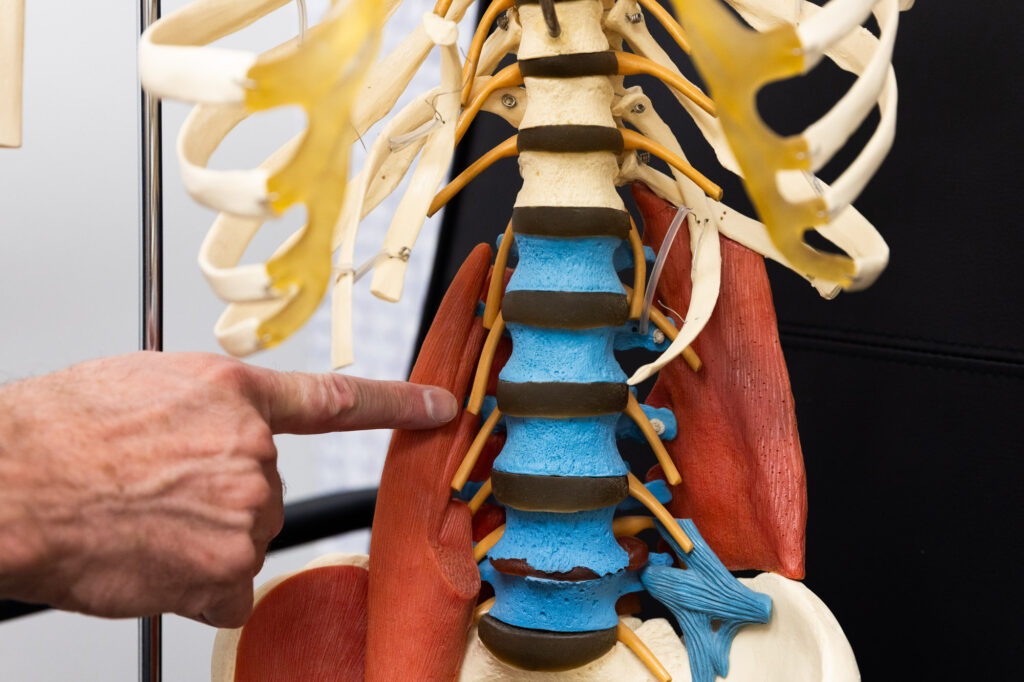
Obese individuals often have altered posture, with increased weight around the abdomen causing the pelvis and lower back to tilt forward. This alters the natural curvature of the spine and places additional pressure on the spinal discs and nerves.
Excess weight also increases the pressure on the spinal joints. Over time, this pressure can cause the joints to thin or bulge, leading to chronic pain and pinched nerves.
Pain Caused by Prior Back Surgery
If you’ve already pursued surgery to resolve the source of your back pain, you’d expect to be more comfortable after your recovery—but that isn’t always the case. Our experts understand how discouraging it is to deal with continued pain after undergoing back surgery. Unfortunately, pain can persist despite taking the appropriate actions and seeking medical intervention to solve your issues.
Failed back surgery syndrome refers to continued back pain after surgery. Even though the goals of your procedure may have been achieved, your back surgery may have failed to resolve your symptoms completely.
Factors causing failed back syndrome vary from patient to patient. In some cases, the concerns addressed during surgery may not have been the only source of your pain. Other patients may have been left with damage from the surgical procedure itself.
Pelvic Floor Dysfunction
Though pelvic floor dysfunction primarily causes concerns like urinary incontinence and sexual dysfunction, it can also lead to pain in the lower back.
Pelvic floor dysfunction occurs when the muscles responsible for pelvic strength and stability weaken. These muscles stretch from your pubic bone to your tailbone. While this condition is most common in women who have previously given birth and who have reached menopause, it can be found in men and women of all ages.
As part of the core muscle group, the pelvic floor provides stability throughout the body. But once these muscles stop working properly, the torso and pelvis become unstable, causing pain where the pelvis and lower spine meet.
How We Treat Back Pain at InterveneMD
For all the time you’ve spent dealing with nagging back pain, you deserve solutions that get to the root cause of your health concerns.
At InterveneMD, we take a functional approach to back pain relief in Mt. Pleasant. Whereas traditional medicine only addresses your symptoms, we take the entire body system into consideration when assessing your concerns.
We also offer a variety of regenerative treatment options. Our experts can customize your treatment plan, ensuring you receive the care you need to achieve lasting relief. From steroid injections to prolotherapy, we can help you overcome back pain and get back to the things you enjoy most.
Consult
Scheduling a consultation with one of our pain experts is the first step in deciding you deserve better.
At the start of your appointment, your provider will listen and learn more about your back pain. They will ask several questions, including when you first noticed your pain, if it worsens with movement, if you’ve had prior surgery, and whether or not any treatment methods have improved your condition in the past. Be prepared to answer other questions about your medical history and goals for your care.
Once your provider identifies the potential source of your concerns, they will recommend a series of treatments that help you achieve back pain relief in Mt. Pleasant. InterveneMD consultations are collaborative, meaning you play an active role in deciding which options best suit your needs. We encourage you to ask questions and voice any concerns you may have about the treatment process.
Treat
No two patients with back pain are alike. What works for some patients may not be as effective for others.
At InterveneMD, you can trust that your treatment plan is tailored to your unique needs—never cut and dry. Our experts aren’t interested in selling you unnecessary treatments either, so you can feel confident knowing you’re only investing in effective, personalized solutions.
Here are some of our tried-and-true methods for back pain relief in Mt. Pleasant.
Prolotherapy
Prolotherapy involves a series of injections that strengthen the connective tissues causing you pain.
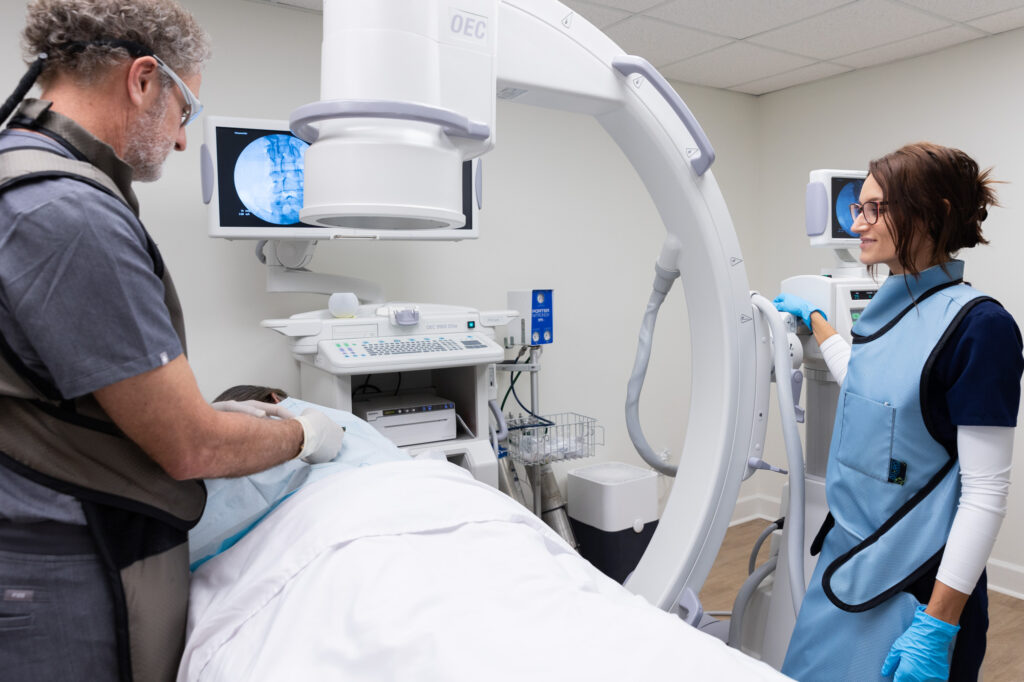
Traditional prolotherapy utilizes saline and sugar solutions to stimulate the body’s natural healing response. At InterveneMD, we enhance the prolotherapy process by using platelet-rich plasma (PRP) and human growth hormones (HGH) to help your bones and joints remain properly aligned. This approach not only allows for a faster recovery, but a better recovery, providing significant, longer-lasting relief.
Steroid Injections
As a traditional treatment method for back pain relief in Mt. Pleasant, steroid injections temporarily reduce inflammation to alleviate discomfort at the source.
For acute injuries, steroid injections minimize pain while your body heals. Your provider may recommend pairing your injections with additional treatment options if you have chronic back pain.
Emsculpt NEO
Our experts may recommend Emsculpt NEO to rebalance and strengthen your core. By combining high-intensity focused electromagnetic (HIFEM) energy and radiofrequency energy, Emsculpt NEO helps you recover from back pain by strengthening key muscle groups without having to overexert yourself at the gym.
In one treatment session, Emsculpt NEO stimulates up to 20,000 muscle contractions, which is much more than what’s possible during a regular workout you can complete by yourself.
Emsella
Emsella uses HIFEM energy to stimulate the pelvic floor muscles and replicate Kegel exercises, strengthening your pelvic floor to restore internal stability. The Emsella chair can deliver up to 11,000 contractions in just one 30-minute session.
We also recommend Emsella to patients coping with additional symptoms related to pelvic floor dysfunction, including urinary incontinence, sexual dysfunction, and constipation.
Follow-Up
Throughout your back pain journey at InterveneMD, you’ll have regular check-in appointments with your provider. They will run additional tests to assess your condition and monitor your progress, helping you experience ongoing, lasting pain relief.
At your follow-up appointments, your provider may recommend additional back pain treatments outside of the services we offer. These could include:
- Physical therapy
- Surgery
- Chiropractic care
- Pilates
- Yoga
- Private strength or exercise training
Your provider can connect you with trusted resources in the area to help you achieve the most efficient back pain relief in Mt. Pleasant.
Relief Is Possible at InterveneMD
Our experts understand how back pain can upend nearly every aspect of your life. It can make caring for your children feel more difficult, distract from your favorite activities, and leave you searching for solutions to help cope.
But at InterveneMD, back pain doesn’t have to be a part of your story. We address your pain from every angle, helping you identify the source of your concerns and take back control of your well-being.
You deserve to walk each day with confidence and strength. Schedule your consultation to learn what’s possible when you choose InterveneMD for back pain relief in Mt. Pleasant.
Interested in our recommendations for how to relieve joint pain? Want to identify the right fibromyalgia treatment for your needs? Visit our blog for more information.

